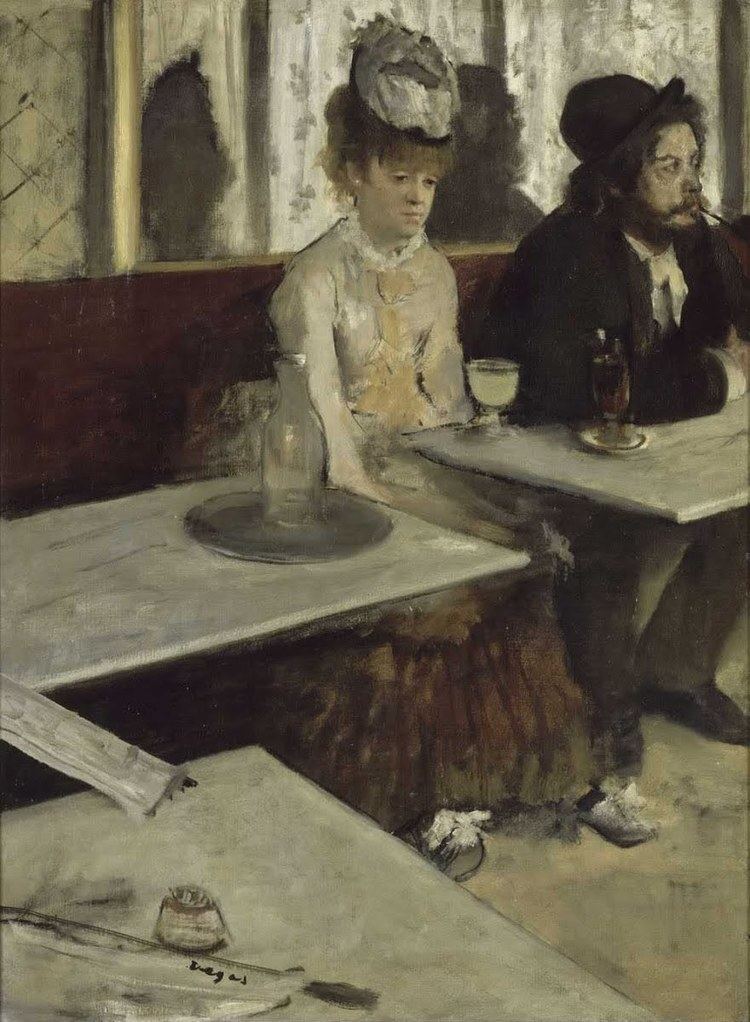Year 1876 Genre History painting Periods Impressionism, Modern art | Created 1875–1876 Media Paint, Oil paint, Canvas | |
 | ||
Dimensions 92 cm × 68 cm (36.2 in × 26.8 in) Similar Edgar Degas artwork, Artwork at Musée d'Orsay, Canvas | ||
Dans un cafe l absinthe degas animation mov
L'Absinthe (English: The Absinthe Drinker or Glass of Absinthe) is a painting by Edgar Degas. Its original title was Dans un Café. Other early titles were A sketch of a French Café and Figures at Café, but when exhibited in London in 1893, the title was finally changed to L'Absinthe, the name by which the picture is known today. It is in the permanent collection of the Musée d'Orsay in Paris.
Contents
L absinthe short film hd
Description
Painted in 1875–76, the work portrays two figures, a woman and man, who sit at the center and right, respectively. The man, wearing a hat, looks to the right, off the canvas, while the woman, dressed more formally, and wearing a hat, stares vacantly downward. A glass filled with the eponymous greenish liquid is on the table in front of her. The scene is a representation of the increasing social isolation occurring in Paris during its stage of rapid growth. The models used in the painting are an actress, Ellen Andrée, and a bohemian painter and printmaker, Marcellin Desboutin. The café where they are taking their refreshment is the Café de la Nouvelle-Athènes in Paris.
Reception
At its first showing in 1876, the picture was panned by critics, who called it ugly and disgusting. It was put into storage until being exhibited again in 1892, when it was booed off the easel. The painting was shown again in England in 1893, this time entitled L'Absinthe, where it sparked controversy. The people represented in the painting were considered by English critics to be shockingly degraded and uncouth. Many regarded the painting as a blow to morality; this was the general view of such Victorians as Sir William Blake Richmond and Walter Crane when shown the painting in London. That reaction was typical of the age, revealing the deep suspicion with which Victorian England had regarded art in France since the early days of the Barbizon School, and the desire to find a morally uplifting lesson in works of art. Many English critics viewed the picture as a warning lesson against absinthe, and the French in general. The comment by George Moore on the woman depicted was: "What a whore!" He added, "the tale is not a pleasant one, but it is a lesson". However, in his book Modern Painting, Moore regretted assigning a moral lesson to the work, claiming that "the picture is merely a work of art, and has nothing to do with drink or sociology."
